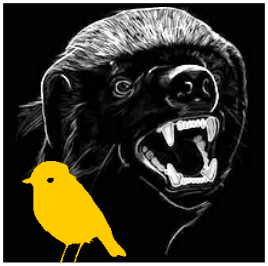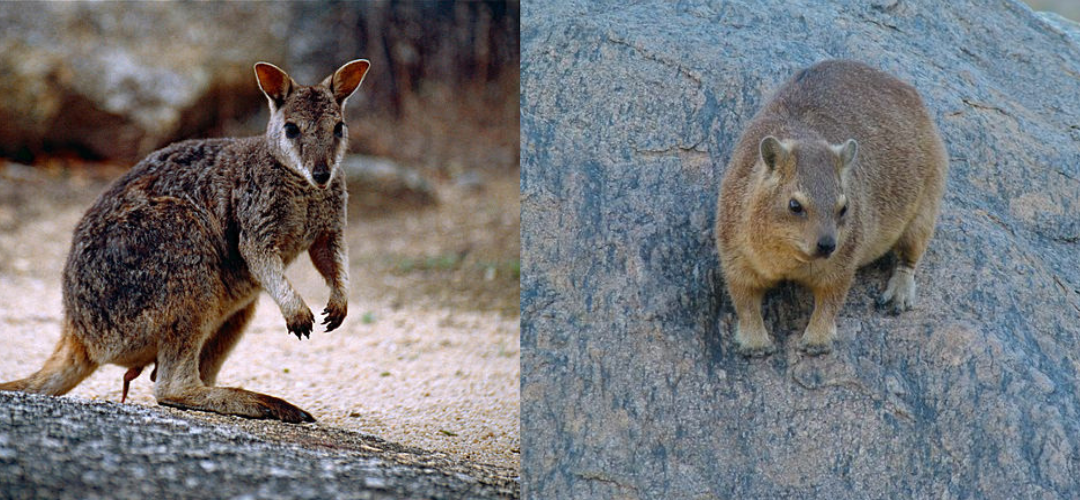Petrogale © Bernard Dupont, CC BY 2.0, via Wikimedia Commons and Procavia capensis © Bernard Dupont, CC BY 2.0, via Wikimedia Commons
Evolution over fifty million years should have shaped the ancestors of rock-wallabies and rock hyraxes similarly. It did not, because of different predators.

Prof. Mumblebard claims: “Rock-dwelling mammals in Australia and Africa have diverged because natural selection, while a valid principle, doesn’t necessarily apply. The ancestors of rock-wallabies and the ancestors of rock hyraxes differed by chance. Given that evolution tinkers instead of re-inventing, the exaggeration of these initial differences eventually produced unpredictably different adaptive solutions despite the similarity of their environments.”
Robin and the Honey Badger respond: “The physical environments of rock-wallabies and rock hyraxes, i.e. rocky outcrops and their associated boulders and cliffs, are similar; but it is the regimes of predation that are different. The discrepancies between the Australian and African mammals are consistent with this difference in predatory pressure and consequently hold true to the principle of evolutionary convergence. Rock-wallabies give birth to embryonic young whereas rock hyraxes give birth to precocial young. Rock-wallabies seem mute whereas rock hyraxes have different alarm calls for various predators. Rock-wallabies can hardly bite whereas rock hyraxes have upper incisors so honed for defence that they get in the way of eating. Rock-wallabies flee bipedally using elastic ricochet and a long tail for balance and keep minimal contact with the rock surface. By contrast, the virtually tailless rock hyraxes can squeeze deep into crevices and flee quadrupedally using swivelling wrists to ensure maximal contact with rock surfaces. All these features are adaptive because Australia is far poorer in predators than Africa. Not only is the Australian wedge-tailed eagle less specialised for a diet of rock-wallabies than its African relative, Verreaux’s eagle, is for a diet of rock hyraxes, but leopard, caracal, honey badger and baboons lack counterparts among marsupials. In particular, baboons are so clever and agile that they can harm hyraxes through juvenile mischief as well as opportunistic carnivory. Even if the only additional predator in Australia was a counterpart for baboons, it’s unlikely that animals with the features of rock-wallabies would have evolved in the first place, let alone survived to the present day.”

Please join us here at the Bio-edge with your own comments. In the discussion below we encourage links to any evidence supporting either Prof. Mumblebard or Robin and the Honey Badger. Illustrations are welcome but please cite all sources or we may be forced under copyright to delete your comment.

